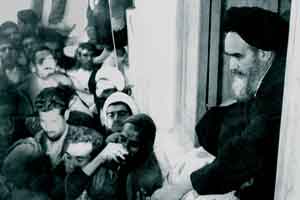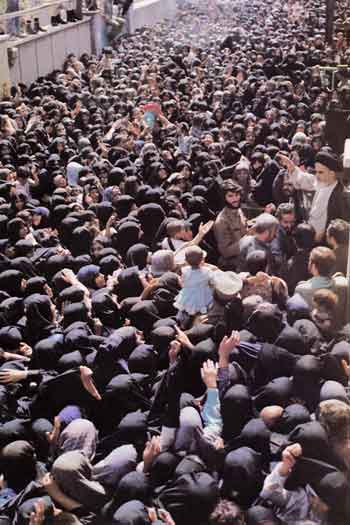As a center of religious learning for Shi'as around the globe, Qom fell into decline for about a century from 1820 to 1920, but had a resurgence when Sheikh Abdul Karim Hae'ri Yazdi accepted an invitation to move from Sultanabad (now called Arak, Iran), where he had been teaching, to Qom. Imam Khomeini followed his teacher a few months later and entered Qom in 1922.
Today, Qom is counted as one of the focal centers of the Shi'a both in Iran and around the globe. Since the revolution the clerical population has risen from around 25,000 to more than 45,000 and the non-clerical population has more than tripled to about 700,000. Substantial sums of money in the form of alms and Islamic taxes flow into Qom to the ten marja-i taqlid or "Source of Imitation" that reside there. The number of seminary schools in Qom is now over 50, and the number of research institutes and libraries somewhere near 250.
Its theological center and the Fatima al-Masumeh Shrine are prominent features of the provincial capital of Qom province. Another very popular religious site of pilgrimage formerly outside the city of Qom, but now more of a suburb is called Jamkaran.
What Significance does Qom have in Imam Khomeini's life?
Among all the houses that Imam Khomeini bought or rented in Qom, the last one, which was situated in Yakhchal Qazi Street is famous and is now a tourist attraction. The Imam bought this house in 1956. This was the first house the Imam owned and he lived there for the rest of his life. The house cost 13,000 Tomans and had an area of 300 square meters. The Imam was able to buy this house when he received his inheritance from the sale of his father's house in Khomein.
 Imam's residence-Qom; The people welcoming the Imam after being released from prison(Qom)
Imam's residence-Qom; The people welcoming the Imam after being released from prison(Qom)The house on Yakhchal Qazi Street was very big and simple. This brick-shaped house was a symbol of the simplicity of a man who lived a life of honor and dignity. Imam Khomeini's residence was a place, where people's problems were dealt with and fixed and where plans to help the people's movement progress, were made. Legal affairs were brought to the Imam and legal rulings were issued. Sometimes it was a classroom, and sometimes it was a mosque. Imam Khomeini gave his historical speech against the capitulation bill at this residence. On the 11th of December 1963, the police of Qom and the Savak attacked Imam Khomeini's house and Imam Khomeini continued his lecture without paying attention to their presence. Early 1963, the military forces tried to interrupt the mourning sessions of Imam Hussein (as). When Imam Khomeini was informed about this, he warned the military forces of the people's rebellion if they carried out such an act.
The last lecture Imam Khomeini gave in his Yakhchal Qazi residence was on the 26th of October 1964 regarding the capitulation bill. The morning of that day, people came to visit the Imam and hear his lecture. Imam Khomeini began his speech by saying: "Surely we belong to God, and to Him we will return." He then stated the following: "I cannot express the sorrow I feel in my heart. My heart is breaking. Since the day I heard of the latest developments in Iran, I have barely slept….. With a sorrowful heart, I count the days until my death comes (the audience weeps). Iran no longer has an Eid; they have turned our Eid into mourning…....They have sold us, they have sold our independence…….Our honour has been trampled on; the greatness of Iran has been destroyed." A few days after this speech on the 4th of November the military forces arrested Imam Khomeini and deported him to Turkey.
 Imam's residence-Qom; people welcoming the Imam on his return to Qom
Imam's residence-Qom; people welcoming the Imam on his return to QomAfter Imam Khomeini was deported to Turkey, the house still belonged to the Imam but was left in Ayatollah Pasandideh's hand, who was the Imam's brother. This was because the Imam and his family were later deported to Najaf. After the victory of the Islamic revolution and Imam Khomeini's return to Qom, the Imam longed to go to his house on Yakhchaal Qazi Street, but the narrow streets made it difficult for large crowds to visit the Imam. Ayatollah Ishraqi (Imam's son-in-law) suggested that the Imam live in his house which was situated on the eastern part of Hojati Bridge. However, this house was also not suitable for large crowds of people. Therefore, the Imam decided to live in Ayatollah Mohammad Yazdi's house which was close to Ishraqi's house. Therefore, this residence became Imam Khomeini's home and Ishraqi's house became his office. In the outer part of Ishraqi's house, there was a big room where the Imams' students would come to visit and speak to him.